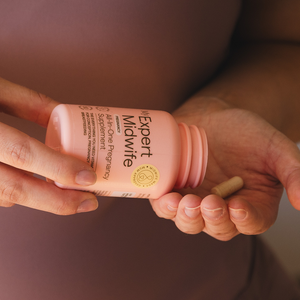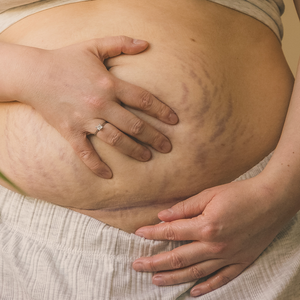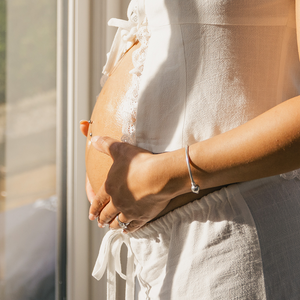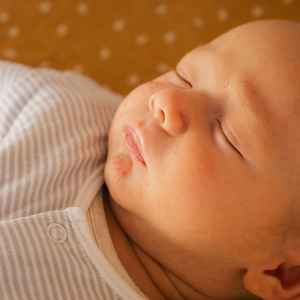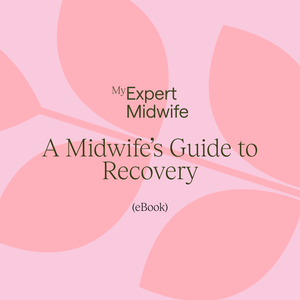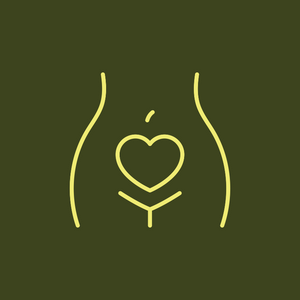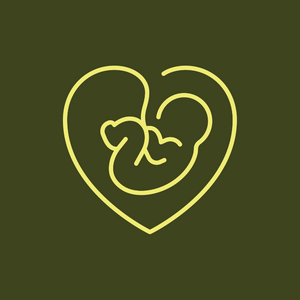What are piles?
Haemorrhoids, or piles, are swollen blood vessels that occur around your anus (bum hole) or inside your rectum (back passage).
They can appear at any time in your life but are particularly common during pregnancy and in the immediate post-birth period.
Why do piles appear?
During pregnancy, the walls of your blood vessels relax – due to the hormone progesterone - and you have an increased blood volume. As well as this, the weight of your growing womb puts increasing pressure on the circulation of your lower body, causing this to slow down.
If this wasn’t enough, constipation - in its own right, another very common symptom of pregnancy -plays a starring role in the appearance (and exacerbation) of piles.
It is therefore easy to see why haemorrhoids, varicose veins and vulval varicosities (swollen blood vessels around your vulva) commonly occur during pregnancy.
What are their signs and symptoms of piles?
Piles can feel different for everyone, depending on where they are (external – around the anus, or internal – inside the back passage), how long they’ve been there for and how big they are.
If you have piles, you could experience some or all of these symptoms:
- Itchiness – caused when an internal haemorrhoid prolapses
- Pain – usually exacerbated after you’ve been to the toilet or been sat/stood for a long time
- Bleeding after having a poo – you will usually notice this as bright red blood when you wipe
- Slimy mucus discharge after opening your bowels
- Feeling like you still need to go after a poo
- A lump or lumps around your anus, which may feel harder or softer to the touch
How can I prevent them?
Prevention is key! If you can stop the appearance of piles, you’ll rid yourself of a big pain in the - well, you know!
The single most important thing you can do is prevent or manage constipation. So, keep really well hydrated, eat plenty of foods that contain both types of fibre (soluble and insoluble), significantly reduce or give up on processed carbohydrates (white bread, pasta, etc- just replace with the wholegrain version, wholemeal bread and pasta, brown rice etc) and processed foods, do regular exercise (a daily brisk walk may be enough!) and enjoy a regular tummy massage.
Also:
- Try not to put off having a poo, as this can make it drier and harder to pass
- Use a stool to elevate your feet when you go to the toilet
- Avoid standing or sitting in the same position (including on the toilet) for prolonged periods of time
- Use loose-fitting clothing and underwear
- Remember to do your pelvic floor exercises daily, as this will help strengthen your pelvic floor muscles and make having a poo easier.
- Do not strain!
I have piles, so how can I ease them?
If you already have piles, do not despair. Even if they do not go away completely, you may still be able to relieve some of the symptoms by:
- Soaking the area – Sit in the bath, on a bidet or invest in a Sitz bath (a small bowl that sits in your toilet) and soak the area, ideally, twice a day. Warm water will soothe the area, relieving some of the pain and itchiness of piles. You can also add Soak for Bits to provide further relief Alternatively, soak in cold water to momentarily numb the area.
- Applying cold or warm compresses to the area – a soaked sanitary pad or towel, a cold-pack wrapped in a cloth or a warm heat pack will work.
- Using moist toilet tissue or wipes instead of dry toilet paper to clean yourself and pat rather than wipe or rub to avoid irritating the area even more
- Trying to gently push the haemorrhoid back in after opening your bowels, using your finger and some lubricating gel
- Spraying Spritz for Bits directly onto the area or applying it using a small piece of soaked cotton wool can help alleviate the swelling, pain and itching of the pile
- Asking your midwife or GP for a haemorrhoid cream suitable to use in pregnancy and, if you are struggling to manage your constipation, a prescription for a ‘bulk forming’ laxative (these are not absorbed and are therefore safe to use in pregnancy)
- Not scratching! This will only irritate the area further. Try the warm or cold compresses, Spritz for Bits and/or apply an ointment to relieve the itch
- Avoiding irritating foods such as hot spicy foods and caffeine
When do I need to contact my midwife or doctor?
- If you are not sure you have piles but experience bleeding, itching or pain around your anus
- If the bleeding is heavier than just a little blood when you wipe
- If your stools appear black/tarry (dark stools are normal if you take iron tablets, so see if they appear different or check with your doctor if you are unsure)
- If you experience severe symptoms
- If your symptoms don’t ease despite treatment or management
Summary
Piles, or haemorrhoids, can be a common and very uncomfortable ailment of pregnancy. The best thing you can do is to be on guard and prevent them but, if you already have them, there are many things you can do to help to alleviate their symptoms or, even, make them disappear.
